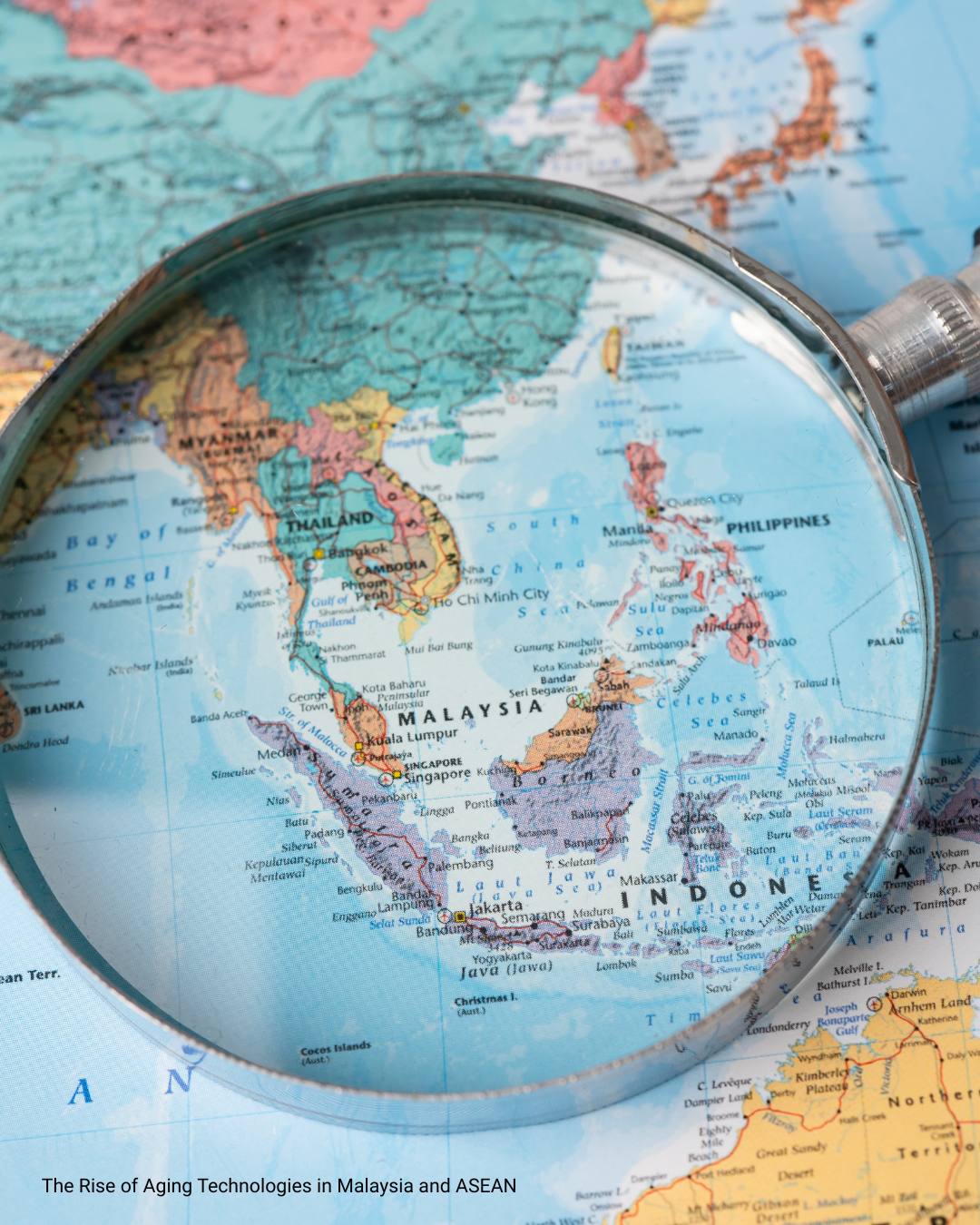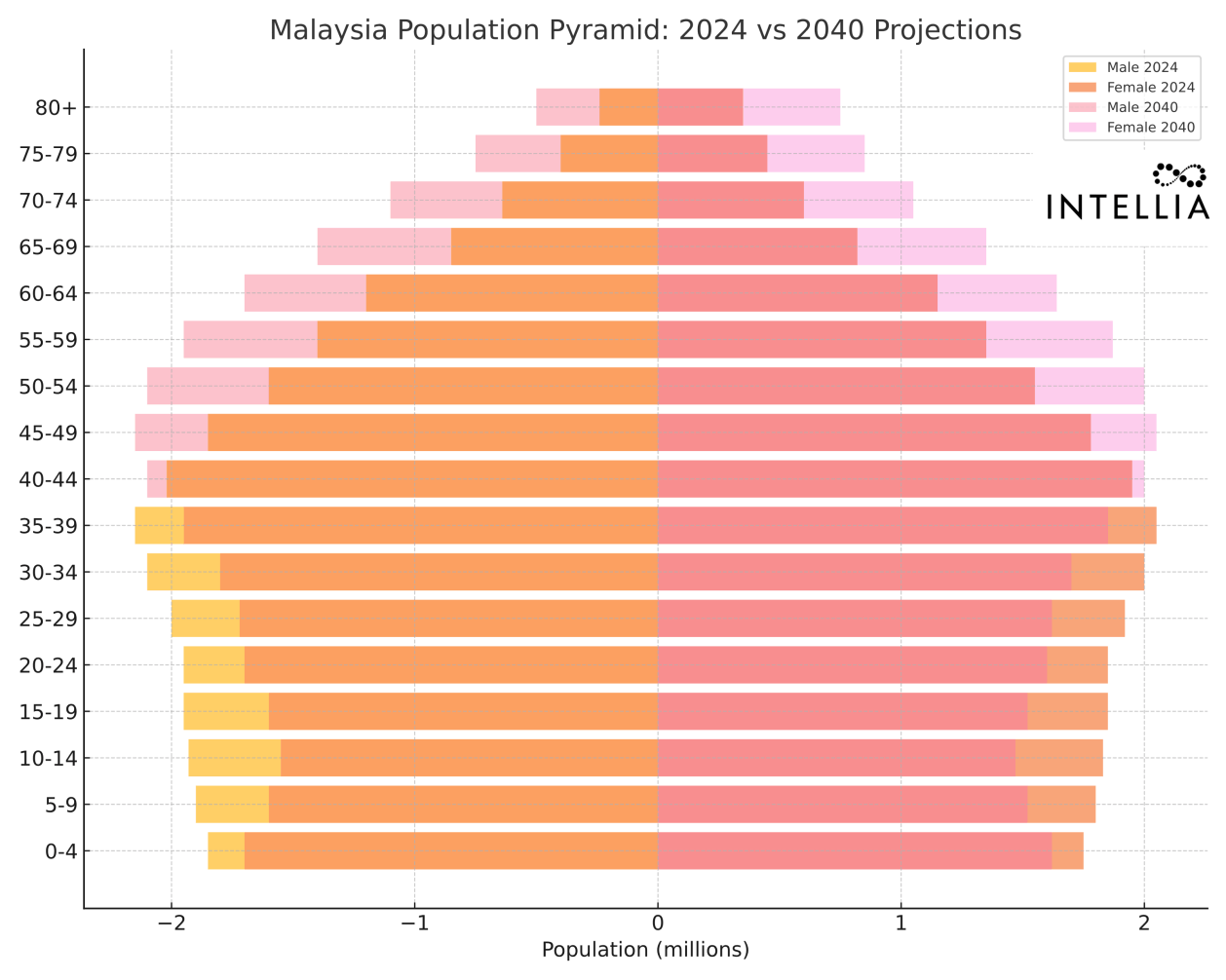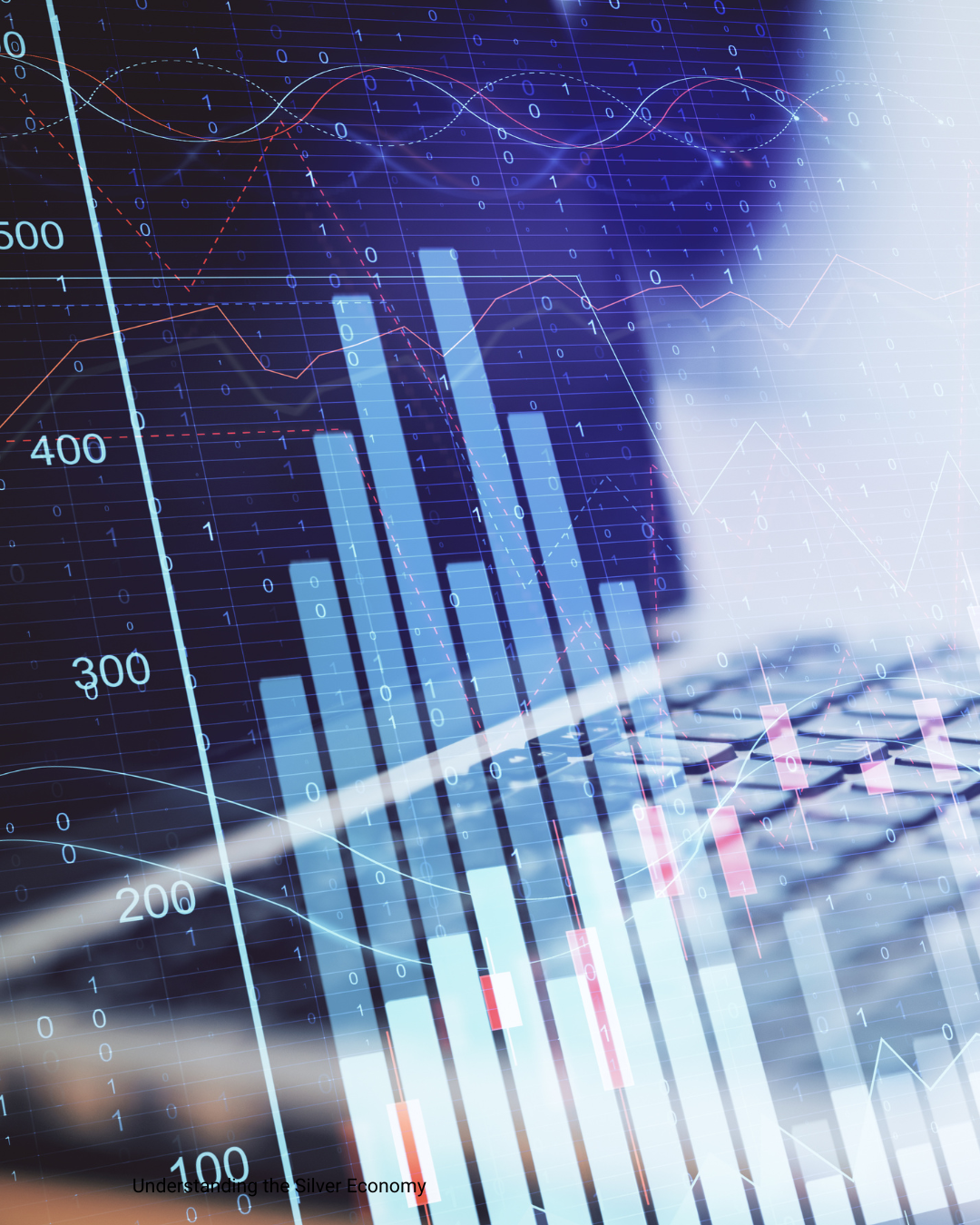04.
Blend catalytic and commercial capital.
Use Khazanah’s impact fund or Yayasan Hasanah grants to absorb first-loss risk, then layer conventional VC or corporate venturing money. Tie future cashflow to EPF outcome-payments so scale-up economics remain attractive even in price-controlled healthcare segments.
Why it matters
Protects IRR even in price-controlled healthcare segments.
05.
Localise and publish, then replicate.
Optimise Bahasa UX, offline modes, and telco data-bundles for rural zones; bundle hardware through appliance OEMs to halve acquisition cost. Publish peer-reviewed results within 12 months. Credibility invites policy uptake and then port the validated model into Indonesia, Thailand and Vietnam, markets five-to-ten years behind Malaysia on the ageing curve but facing identical structural gaps.
Why it matters
Halves acquisition cost, builds policy pull, and leverages ageing curves 5-10 years behind Malaysia.
06.
Workforce upskilling & caregiver certification
Partner TVET colleges and digital academies to launch a micro-credential pathway for AgeTech technicians and caregivers and target: 5,000 certified professionals in three years.
Why it matters
Ensures human capacity keeps pace with tech adoption, closes last-mile care gaps, and creates green-collar jobs across ASEAN..




